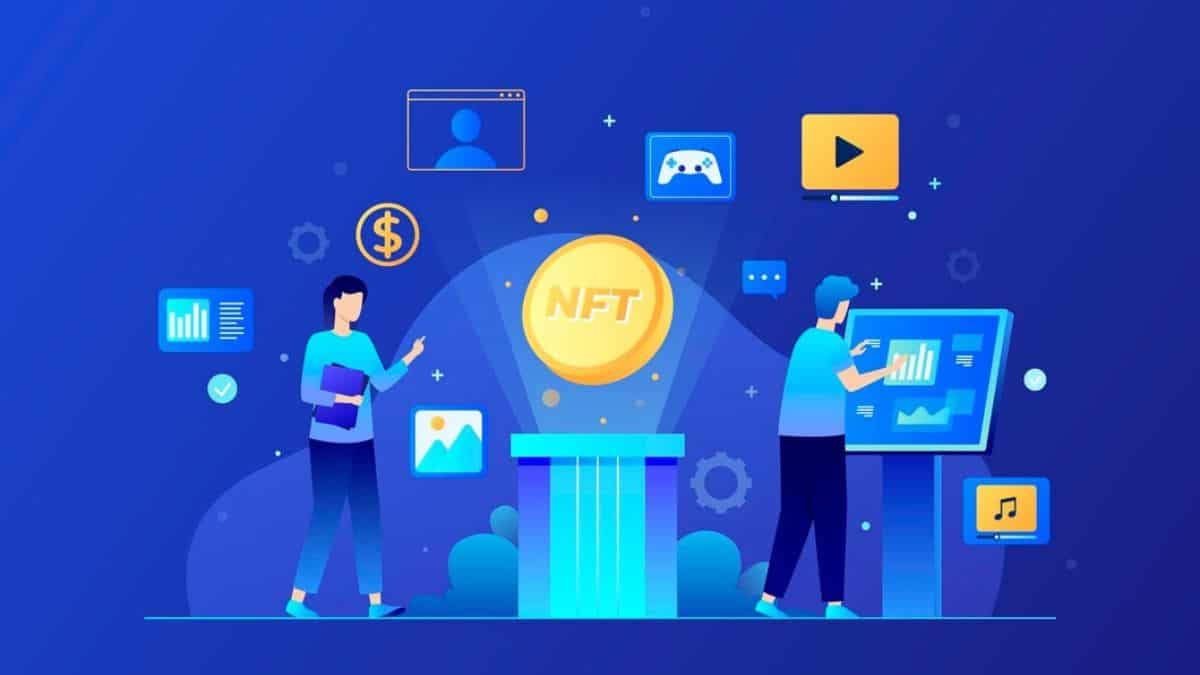CRYPTO
How to Develop Your Own Crypto Exchange Platform: Pitfalls and Life Hacks

Building a crypto exchange platform is an exciting yet complex endeavor. With the rising popularity of digital assets, launching your own exchange can be highly lucrative. However, this process involves overcoming various technical, legal, and operational challenges. In this article, we’ll break down the key steps to creating your own crypto exchange, highlight common pitfalls, and introduce life hacks to streamline the process. Finally, we’ll show you how using a white-label solution like LabelRails can make it easier, offering ready-made web and mobile apps to kickstart your exchange.
Step 1: Research the Market and Understand Regulations
Before development begins, it’s crucial to understand the current crypto market and regulatory requirements.
Compliance is Key
Regulations vary, so compliance is complex but vital. Common requirements include:
• Licensing: Obtain the necessary licenses in your region, adhering to standards like the EU’s MiCA regulation.
• KYC/AML: Implement robust KYC (Know Your Customer) and AML (Anti-Money Laundering) protocols to ensure a secure and compliant platform.
Life Hack: Use LabelRails’ fully regulated infrastructure, which includes built-in KYC/AML features, streamlining compliance processes and saving you the hassle of navigating complex regulatory requirements.
Step 2: Define Core Features
To stand out, your crypto exchange needs essential features that cater to user needs.
Basic Features
• User Authentication: Secure login with multi-factor authentication.
• Wallet Integration: Support both hot and cold wallets for crypto storage.
• Order Matching: A core engine to facilitate trades.
• Payment Gateways: Allow deposits and withdrawals via bank transfers, cards, and other methods.
Advanced Features
• APIs: Enable third-party integrations to enhance functionalities.
• Web and Mobile Apps: Offer user-friendly trading experiences on web and mobile platforms.
• Security Protocols: Implement data encryption, two-factor authentication, and DDoS protection.
Life Hack: LabelRails offers ready-made web and mobile apps, providing a feature-rich interface out of the box, significantly reducing development time and costs.
Step 3: Choose Your Tech Stack and Develop the Platform
Your technology choices will affect the platform’s performance, security, and scalability.
Tech Stack and Development
• Programming Languages: Use Python, Java, or Node.js for a reliable backend.
• Databases: PostgreSQL or MongoDB are great choices for managing large data volumes.
• Blockchain Nodes: Integrate with blockchain nodes like Bitcoin Core or Ethereum for direct crypto transactions.
• Security: Implement SSL encryption, firewalls, and frequent security audits.
Pitfall: Building a secure, high-frequency trading engine is complex and time-consuming.
Life Hack: LabelRails provides an integrated trading engine as part of their white-label solution, enabling you to skip the technical intricacies and focus on user experience.
Step 4: Testing and Launch
Testing
• Stress Testing: Ensure the platform can handle high trading volumes.
• Security Testing: Conduct thorough audits to safeguard assets and user data.
• User Feedback: Gather input from potential users to refine the interface.
Pitfall: Skipping detailed testing can result in security breaches and downtime.
Life Hack: Leverage LabelRails’ pre-tested platform, minimizing risks and allowing you to launch confidently.
The Easier Way: Using LabelRails’ White-Label Crypto Exchange
Developing a crypto exchange from scratch involves significant investment, time, and risk. The easiest way to build your exchange is by using a white-label platform like LabelRails.
Why Choose LabelRails?
• Turnkey Solution: Launch your exchange in weeks with ready-made web and mobile apps, saving months of development time.
• Fully Regulated: Integrated KYC/AML and compliance services ensure you meet regulatory standards.
• Advanced Features: Includes virtual IBANs, crypto-to-fiat transactions, wallet management, and more.
• Customizable: LabelRails offers a flexible design that you can tailor to your branding.
Conclusion
Building a crypto exchange is challenging but rewarding. By following the steps outlined and avoiding common pitfalls, you can develop a secure, scalable platform. However, using a white-label solution like LabelRails is the smartest choice. With their ready-made, fully regulated crypto infrastructure, including web and mobile apps, you can focus on growing your business while they handle the complexities.

CRYPTO
Navigating the Bitcoin Age with Biitland.com

The world of cryptocurrency is buzzing with potential, and at the center of it lies Bitcoin, a digital asset that has changed the landscape of finance. For anyone looking to stay ahead in this dynamic market, understanding the nuances of cryptocurrency is crucial. Biitland.com emerges as a beacon for those eager to decipher this complex space, offering insights, analysis, and knowledge that empower investors and enthusiasts alike. In this blog post, we’ll explore how Biitland.com serves as your gateway to the Bitcoin age and beyond.
A New Era of Finance
Cryptocurrency, particularly Bitcoin, has revolutionized financial transactions, offering a decentralized alternative to traditional banking systems. The allure of Bitcoin lies in its ability to operate without a central authority, making transactions transparent and secure. At Biitland.com, we recognize the significance of this shift and are committed to helping you understand the implications of these changes.
Understanding Cryptocurrency
Before diving into the world of Bitcoin, it’s essential to grasp what cryptocurrency is. In simple terms, a cryptocurrency is a digital or virtual currency that uses cryptography for security. Unlike traditional currencies, cryptocurrencies are decentralized and typically use a technology called blockchain to record transactions. This secured method of tracking ensures transparency and enhances security, making cryptocurrencies an attractive option for modern investors.
The Role of Bitcoin
Bitcoin, the first and most well-known cryptocurrency, was introduced in 2009 by an anonymous entity known as Satoshi Nakamoto. Its creation marked the beginning of a new era in digital finance. Bitcoin operates on a peer-to-peer network, allowing users to send and receive payments without the involvement of banks or any third-party intermediary. This aspect of Bitcoin is particularly appealing to those seeking autonomy and privacy in their financial transactions.
Why Choose Biitland.com?
For those venturing into the world of cryptocurrencies, having a reliable source of information is vital. Biitland.com stands out as an industry leader in providing comprehensive insights and updates on the cryptocurrency market. Here’s why our platform is your go-to resource:
Expertise and Trust
Our team of seasoned researchers, analysts, and writers dedicates itself to delivering high-quality, unbiased information. We meticulously research every aspect of the crypto world, from market trends to regulatory changes, ensuring you have the data needed to make informed decisions.
In-Depth Analysis
At Biitland.com, we offer in-depth reports and valuable insights into various aspects of the cryptocurrency market. Whether you’re interested in investment strategies or technological developments, our platform provides actionable insights to enhance your understanding.
Educational Resources
We believe in empowering individuals with knowledge. Our educational resources demystify the world of Bitcoin and cryptocurrencies, offering clear and engaging content tailored to both newcomers and seasoned investors.
The Impact of Bitcoin on Financial Markets
Bitcoin’s emergence has had a profound impact on financial markets globally. Its volatility and potential for high returns have attracted investors seeking significant gains. However, this volatility also means that investing in Bitcoin carries substantial risk. At Biitland.com, we emphasize the importance of understanding these risks while exploring the potential rewards.
Navigating Regulatory Challenges
The regulatory landscape for cryptocurrencies is constantly evolving. Governments worldwide are grappling with how to regulate this new asset class while allowing for innovation. Biitland.com keeps you informed about the latest regulatory developments, helping you stay compliant and aware of any changes that may affect your investments.
How to Invest in Bitcoin
Investing in Bitcoin requires careful consideration and planning. Here are some essential steps to guide you:
Research and Educate Yourself
Before making any investment, it’s crucial to educate yourself about Bitcoin and the broader cryptocurrency market. Utilize Biitland.com’s resources to gain insights into market trends, potential risks, and investment strategies.
Choose a Trustworthy Exchange
Selecting the right cryptocurrency exchange is vital for a seamless trading experience. Ensure the platform you choose is reputable, secure, and offers competitive fees. Biitland.com provides comprehensive reviews and comparisons to help you make an informed choice.
Start Small
If you’re new to cryptocurrency investing, consider starting with a small amount. This approach allows you to learn the ropes without exposing yourself to significant financial risk.
The Future of Bitcoin and Cryptocurrency
The future of Bitcoin and cryptocurrencies is bright, with many experts predicting increased adoption and integration into mainstream financial systems. Innovations such as decentralized finance (DeFi) and non-fungible tokens (NFTs) are expanding the possibilities and applications of blockchain technology.
Join the Biitland.com Community
At Biitland.com, we invite you to join our community of like-minded individuals eager to explore the potential of cryptocurrencies. Whether you’re a seasoned investor or a curious newcomer, our platform offers valuable insights and resources to guide your crypto journey.
Conclusion
In conclusion, navigating the world of cryptocurrency requires knowledge, diligence, and a trusted guide. Biitland.com is your partner in this exciting venture, offering expert analysis, educational resources, and a supportive community. As you explore the possibilities of the Bitcoin age, remember that informed decisions are your greatest asset. Visit Biitland.com today and unlock a wealth of information to fuel your cryptocurrency adventure.
CRYPTO
How Crypto Legacy App Software is Transforming the Digital Asset Management Landscape

In the fast-paced world of cryptocurrency, staying updated and efficient is key to success. That’s where Crypto Legacy App Software comes in. This innovative platform is designed to simplify the way users manage their digital assets, providing a safe and secure environment for buying, selling, and storing cryptocurrencies. Whether you’re a seasoned investor or new to the crypto scene, understanding how this tool can enhance your investment strategy is crucial.
In this comprehensive guide, we’ll explore the various features and benefits of Crypto Legacy App Software. You’ll learn how it integrates with market trends, appeals to users across different experience levels, and offers unique functionalities that set it apart from other platforms. Let’s get started on our journey to demystify this cutting-edge software.
What Makes Crypto Legacy App Stand Out?
Crypto Legacy App Software is not just another cryptocurrency management platform. It’s a holistic solution tailored to meet the needs of investors at every stage. By integrating market data analytics and automated tools, it offers a seamless user experience that enhances decision-making and trading efficiency. The software’s unique blend of features makes it a preferred choice for both beginners and experienced traders alike.
Secure Digital Asset Management
Security is a top priority for any cryptocurrency investor. With Crypto Legacy App Software, you can rest assured that your investments are protected by state-of-the-art security measures. The platform employs advanced encryption technologies to safeguard user data and digital assets, ensuring your peace of mind as you trade.
User-Friendly Interface
Navigating the complex world of cryptocurrency can be daunting, but Crypto Legacy App Software makes it accessible with its user-friendly interface. Designed with simplicity in mind, the platform allows users to easily manage their portfolios, execute trades, and track market trends. Its intuitive design ensures that even those new to crypto can quickly find their footing.
Comprehensive Market Analytics
Stay ahead of the curve with Crypto Legacy App Software’s comprehensive market analytics. The platform provides real-time data and insights, empowering users to make informed decisions about their investments. From tracking price fluctuations to analyzing market trends, the software equips you with the tools needed to optimize your trading strategy.
Automated Trading Strategies
Take advantage of automated trading strategies with Crypto Legacy App Software. The platform enables users to set predefined trading parameters, allowing the software to execute trades on their behalf. This feature not only saves time but also ensures that you never miss an opportunity to capitalize on market movements.
Portfolio Management Made Easy
Managing a diverse cryptocurrency portfolio can be challenging, but Crypto Legacy App Software simplifies the process. With its automated portfolio management tools, users can easily track their holdings, monitor performance, and make adjustments as needed. The software’s robust features ensure that your portfolio remains balanced and aligned with your investment goals.
Building Community Among Traders
Crypto Legacy App Software fosters a sense of community among its users. The platform provides opportunities for traders to connect, share insights, and learn from one another. By engaging with a network of like-minded individuals, you can gain valuable perspectives and enhance your trading experience.
Exclusive Tools for Advanced Users
While Crypto Legacy App Software is accessible to beginners, it also offers exclusive tools for advanced users. These include customizable trading bots, detailed market reports, and sophisticated charting tools. Whether you’re looking to refine your strategy or explore new trading techniques, the platform’s advanced features provide the support you need.
Customer Support and Resources
A dedicated customer support team is always on hand to assist Crypto Legacy App Software users. From technical issues to general inquiries, the platform ensures that help is just a click away. Additionally, a wealth of educational resources is available, guiding users through the intricacies of cryptocurrency trading.
Continuous Updates and Improvements
The world of cryptocurrency is constantly evolving, and Crypto Legacy App Software keeps pace with continuous updates and improvements. The platform’s developers are committed to enhancing its functionality, ensuring that users always have access to the latest tools and features.
Why Choose Crypto Legacy App Software?
With so many cryptocurrency management platforms available, you may wonder why Crypto Legacy App Software should be your go-to choice. Its comprehensive suite of features, user-friendly design, and commitment to security make it a standout option for anyone looking to maximize their digital asset management.
Getting Started with Crypto Legacy App Software
Ready to take your cryptocurrency trading to the next level? Signing up for Crypto Legacy App Software is quick and easy. Simply create an account, explore its features, and start managing your digital assets with confidence.
Conclusion
Crypto Legacy App Software is more than just a tool—it’s a game-changer for cryptocurrency investors. By offering a secure, intuitive, and feature-rich platform, it empowers users to manage their digital assets effectively. Whether you’re new to crypto or a seasoned trader, this software provides the insights and tools needed to succeed in the dynamic world of cryptocurrency. Explore Crypto Legacy App Software today and discover how it can revolutionize your digital asset management strategy.
CRYPTO
Picoin Possibilities The Future of Digital Currency

The Rise of Picoin in the Digital Era
In today’s rapidly evolving digital landscape, cryptocurrencies stand at the forefront of financial innovation. Among them, Picoin is gaining traction due to its unique features and potential for revolutionizing the way we transact online. With its decentralized nature and emphasis on security, Picoin offers a fresh perspective on what digital currencies can achieve. This blog post will explore the intricacies of Picoin, its benefits, and its impact on both consumers and the broader financial sector.
What is Picoin Understanding the Basics
Picoin is a digital currency that operates on blockchain technology. Unlike traditional currencies issued by governments, Picoin is decentralized, meaning it is not controlled by any single authority. This characteristic makes it resistant to inflation and manipulation. Users can conduct transactions securely and efficiently without the need for intermediaries like banks.
Blockchain technology is at the heart of Picoin’s functionality. It is a distributed ledger system that records all transactions in a transparent and unalterable manner. This ensures that every transaction is verified and traceable, enhancing security and trust among users. The blockchain’s decentralized nature also means there is no single point of failure, making Picoin incredibly robust against cyber threats.
One of the standout features of Picoin is its emphasis on privacy. While transactions are recorded on the blockchain, the identities of users remain anonymous. This balance between transparency and privacy makes Picoin an attractive option for individuals seeking secure and private financial transactions.
How Picoin Differs from Other Cryptocurrencies
At first glance, Picoin may seem similar to other cryptocurrencies like Bitcoin or Ethereum, but it has some distinguishing features. For starters, Picoin boasts faster transaction speeds, thanks to its advanced consensus mechanism. This makes it a practical choice for everyday transactions, unlike some cryptocurrencies that struggle with scalability issues.
Another key difference is Picoin’s focus on environmental sustainability. Traditional cryptocurrencies often require massive amounts of energy for mining, contributing to environmental degradation. Picoin, however, utilizes a more efficient proof-of-stake system, which significantly reduces its carbon footprint. This commitment to sustainability aligns with the growing global emphasis on eco-friendly technologies.
Additionally, Picoin’s governance model sets it apart. Instead of being subject to the decisions of a few developers or miners, Picoin involves its community in decision-making processes. This democratic approach ensures that the network evolves in a way that reflects the interests of its users, fostering a sense of ownership and participation within the Picoin community.
The Benefits of Using Picoin for Transactions
Picoin offers numerous advantages for individuals and businesses alike. One of its most significant benefits is the reduction of transaction costs. Traditional banking systems often impose hefty fees for cross-border transactions. In contrast, Picoin enables low-cost transfers regardless of geographical location, making it an ideal choice for international trade.
Security is another major advantage of using Picoin. The decentralized nature of its blockchain ensures that transactions are tamper-proof and resistant to fraud. This level of security is particularly appealing in an age where cyber threats are increasingly prevalent.
For businesses, adopting Picoin can enhance customer trust. The transparency of blockchain technology allows customers to verify transactions independently, promoting a sense of accountability. This transparency, coupled with the speed and efficiency of Picoin transactions, can streamline operations and improve customer satisfaction.
Potential Challenges and Risks of Picoin
Despite its many benefits, Picoin is not without its challenges. One of the primary concerns is regulatory uncertainty. As governments around the world grapple with how to regulate cryptocurrencies, Picoin users may face legal ambiguities. Clear regulatory frameworks are essential to ensure widespread adoption and to protect users from potential risks.
The volatility of cryptocurrency markets also poses a challenge. Like other digital currencies, Picoin’s value can fluctuate significantly in a short period. This volatility can deter users who seek stability in their financial transactions. To mitigate this risk, potential users should educate themselves about market dynamics and consider diversifying their investments.
Security, while a benefit, is also a concern if not implemented correctly. Users must ensure they adopt robust security practices, such as using secure wallets and enabling two-factor authentication, to safeguard their assets. Failure to do so can result in significant financial losses.
Picoin’s Role in the Global Economy
Picoin has the potential to reshape the global economy by providing an alternative to traditional financial systems. Its ability to facilitate cross-border transactions quickly and inexpensively makes it a powerful tool for international trade. By eliminating the need for currency conversion and reducing transaction fees, Picoin can enhance the efficiency of global commerce.
Furthermore, Picoin’s decentralized nature empowers individuals in regions with unstable financial systems. It offers a stable store of value and a means of transacting that is not subject to government manipulation. This empowerment can enhance financial inclusion and economic stability, particularly in developing countries.
On a larger scale, Picoin can drive innovation within the financial sector. By challenging traditional banking models, it encourages financial institutions to adopt more efficient and user-friendly technologies. This competition can lead to improved services and lower costs for consumers worldwide.
How to Get Started with Picoin
For those interested in exploring Picoin, getting started is relatively straightforward. The first step is to set up a digital wallet. Numerous options are available, each offering varying levels of security and functionality. It’s essential to choose a wallet that meets your security needs and provides a user-friendly interface.
Once you have a wallet, you can acquire Picoin through various exchanges. These platforms enable you to buy, sell, and trade Picoin using traditional currencies or other cryptocurrencies. It’s crucial to choose a reputable exchange with a strong track record of security.
After acquiring Picoin, you can start using it for transactions or investments. Whether you’re making purchases, transferring funds internationally, or simply holding it as a long-term investment, Picoin offers a versatile and secure financial tool.
The Future of Picoin and Digital Currencies
The future of Picoin and digital currencies looks promising, with several trends pointing toward increased adoption. As blockchain technology continues to mature, we can expect improved scalability, enhanced security, and more user-friendly interfaces. These advancements will make Picoin and other cryptocurrencies more accessible to a broader audience.
Institutional adoption is another significant trend. Major financial institutions and corporations are increasingly recognizing the potential of digital currencies. This recognition can lead to greater integration of cryptocurrencies into existing financial systems, further solidifying their role in the global economy.
Regulatory clarity is expected to improve, providing a more secure environment for users. Governments worldwide are working to establish comprehensive frameworks that balance innovation with consumer protection. These efforts will likely lead to increased confidence and adoption of digital currencies like Picoin.
Picoin and Social Impact
Beyond its economic implications, Picoin has the potential to drive positive social change. Its decentralized nature can empower individuals and communities by providing financial autonomy and reducing reliance on traditional banking systems. This empowerment is particularly significant in underbanked regions, where access to financial services is limited.
Picoin can also promote transparency and accountability in various sectors. By enabling traceable transactions, it can reduce corruption and enhance trust in public and private enterprises. This transparency can have far-reaching effects, from improving governance to increasing donor confidence in charitable organizations.
Furthermore, Picoin’s commitment to sustainability aligns with the growing global focus on environmental responsibility. By adopting eco-friendly mining practices, Picoin sets a precedent for other cryptocurrencies, contributing to a more sustainable future for digital currencies.
The Community Behind Picoin
One of the strengths of Picoin is its vibrant and engaged community. Comprising developers, users, and enthusiasts, the Picoin community plays a crucial role in its development and adoption. This collective effort ensures that Picoin remains adaptable to changing needs and continues to evolve in a user-centric manner.
Community members actively participate in decision-making processes, influencing the direction of Picoin’s development. This involvement fosters a sense of ownership and collaboration, driving innovation and ensuring that Picoin remains relevant in an ever-changing digital landscape.
The community also serves as a valuable resource for newcomers. Through forums, social media, and educational resources, users can find support and guidance as they explore the world of Picoin. This support network enhances user experience and encourages broader adoption.
Real-World Applications of Picoin
Picoin’s applications extend beyond simple transactions, making it a versatile tool for various industries. In e-commerce, Picoin offers a seamless payment solution that reduces transaction fees and enhances security. Businesses can benefit from faster settlements and increased customer trust, driving sales and customer satisfaction.
In the realm of remittances, Picoin provides a cost-effective alternative to traditional money transfer services. Individuals can send funds internationally with minimal fees, ensuring that more money reaches recipients. This capability is particularly beneficial for migrant workers and their families, who often rely on remittances for financial support.
Picoin also holds potential in the gaming industry, where it can facilitate in-game purchases and enable a secure and transparent marketplace for digital assets. By integrating Picoin, game developers can enhance user experience and drive engagement.
Conclusion Harnessing the Power of Picoin
In conclusion, Picoin presents a compelling case for the future of digital transactions. Its unique features, including decentralization, sustainability, and community involvement, position it as a leader among cryptocurrencies. By offering a secure, efficient, and environmentally conscious alternative to traditional financial systems, Picoin has the potential to reshape the global economy.
For individuals and businesses alike, adopting Picoin can lead to significant benefits, from reduced transaction costs to enhanced security and transparency. However, it’s essential to approach Picoin with an understanding of its challenges and risks, ensuring that you make informed decisions in this dynamic and rapidly evolving landscape.
Whether you’re a seasoned cryptocurrency enthusiast or a newcomer exploring digital currencies for the first time, Picoin offers a wealth of opportunities. By harnessing its power, you can join a community of forward-thinking individuals and businesses ready to shape the future of finance.
-

 TECHNOLOGY7 months ago
TECHNOLOGY7 months agoNavigate Mojini V3 Login Like a Pro
-

 TOPIC8 months ago
TOPIC8 months agoDiscovering Joe’s Carts: A Adventure on Wheels
-

 BLOG8 months ago
BLOG8 months agoSteve Cartisano Net Worth: A 2024 Deep Dive into His Wealth and Success
-

 BLOG9 months ago
BLOG9 months agoMyWape: A Deep Dive into the Emerging Video-Sharing Platform
-

 BLOG10 months ago
BLOG10 months agollm 申請 statement of purpose
-

 BLOG9 months ago
BLOG9 months agoWhy Aoleonuithietke.com Is the Go-To Resource for Creative Inspiration
-

 BLOG10 months ago
BLOG10 months agoModernized mona lisa: The Ultimate Guide
-

 TECHNOLOGY7 months ago
TECHNOLOGY7 months agoHow to Review and Analyze Security Camera Footage